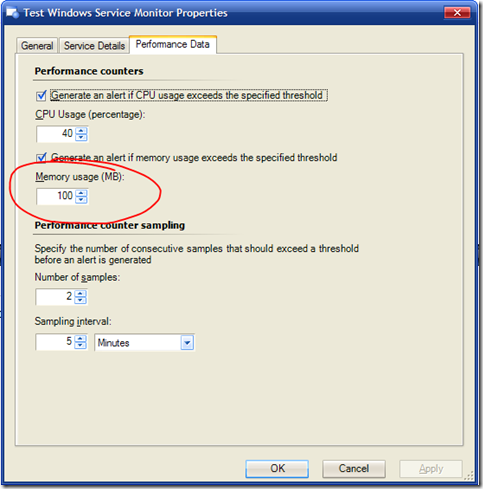
Now what you don’t know (initially), is when you initially create the monitor, it will allow you to set the memory usage to anything you’d like to alert on BUT revert it to 100 MB once you save it. The result is the image above.
There is a way to get around this limitation of 100 MB. Create an override to reflect the actual threshold you wish to use when the first alert comes in.
There is another way I’ve heard that I cannot verify for sure but it involves editing the MP in which the monitor resides manually and updating it to the value you want. I believe this would cause an issue with the console and result in an error when viewing the monitor settings but I have not tried this. Using an override would be the better AND cleaner option.
Also, there is no ETA on if and when a fix will come out but I understand that it is coming.
UPDATE:
This bug has been fixed in CU6


